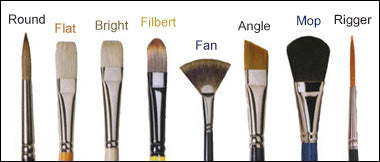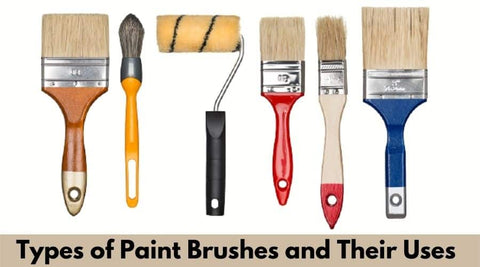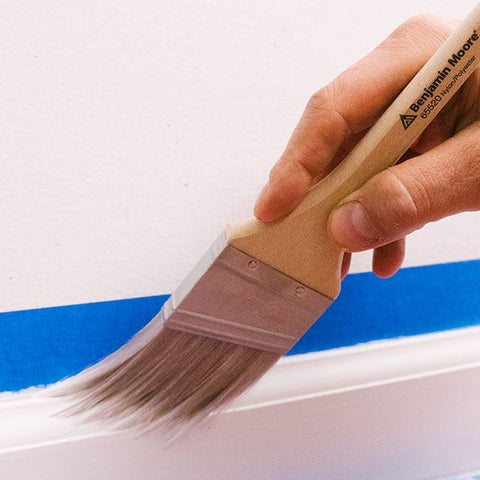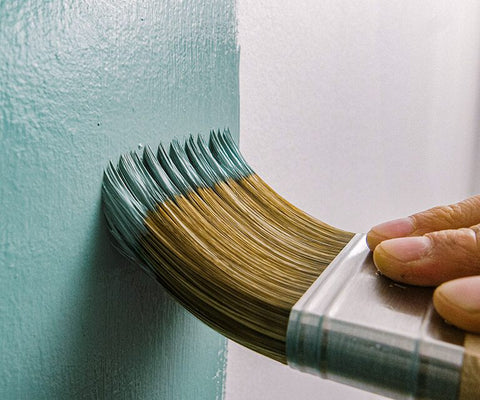When it comes to painting, choosing the right brush is crucial for achieving a flawless finish. With a plethora of brush types available in the market, it can be overwhelming to select the perfect one for your paint project. In this comprehensive guide, we will delve into the world of brushes, exploring different brush types and providing valuable insights on how to choose the right brush for your specific needs.

Understanding Brush Types
Flat Brushes: Ideal for large areas and smooth finishes, flat brushes are characterized by their rectangular shape and evenly distributed bristles. They allow for broad strokes and are perfect for painting walls, ceilings, and furniture.
Angled Brushes: With bristles cut at an angle, these brushes are versatile and suitable for precision work, such as cutting in edges and painting corners. Angled brushes are excellent for achieving neat lines and working around tight spaces.
Round Brushes: Featuring a pointed tip and a round shape, these brushes are great for detailed work and delicate areas. They are commonly used for trim, intricate designs, and blending colors.
Fan Brushes: Comprising of bristles spread out like a fan, these brushes are useful for creating texture, blending colors, and adding special effects. They work exceptionally well with oil and acrylic paints.

Choosing the Right Brush
Consider the Type of Paint: Different brush types are designed for specific types of paint. Synthetic brushes are suitable for latex and water-based paints, while natural bristle brushes work best with oil-based paints. Make sure to match the brush type with the paint you are using to achieve optimal results.
Assess the Surface: The surface you are painting on plays a vital role in determining the appropriate brush. For smooth surfaces, flat brushes are ideal, while rough surfaces may require a brush with stiffer bristles to ensure better coverage.
Size Matters: Brushes come in various sizes, ranging from small to large. For intricate details, opt for smaller brushes, while larger brushes are suitable for broader strokes and covering larger areas quickly. Consider the size of your project and the level of precision required.
Quality Matters: Investing in high-quality brushes will not only enhance the overall painting experience but also yield superior results. Look for brushes with durable bristles, sturdy handles, and well-constructed ferrules. Quality brushes are likely to last longer and provide better control and coverage.

Choosing the right brush for your paint project can significantly impact the outcome of your work. By understanding the various brush types available and considering factors such as the type of paint, the surface you're painting on, the size of the brush, and the overall quality, you can make an informed decision that will enhance your painting experience and deliver exceptional results.
Whether you're working on a large-scale project or a delicate piece of artwork, selecting the appropriate brush type is essential. Flat brushes are ideal for covering large areas quickly and smoothly, while angled brushes provide precision and are perfect for cutting in edges and painting corners. Round brushes are excellent for intricate details, and fan brushes offer unique texturing and blending capabilities.

When choosing a brush, it's crucial to consider the type of paint you're using. Synthetic brushes are suitable for water-based paints, while natural bristle brushes are better suited for oil-based paints. Additionally, assessing the surface you're painting on will help determine the brush with the right bristle stiffness for optimal coverage.
Size matters too. Smaller brushes are ideal for intricate work, while larger brushes are more efficient for covering larger areas. Considering the size of your project and the level of detail required will guide you in selecting the most appropriate brush size.

Lastly, investing in high-quality brushes will enhance your painting experience and yield superior results. Look for brushes with durable bristles, sturdy handles, and well-constructed ferrules. While quality brushes may have a higher upfront cost, they will last longer and provide better control, coverage, and overall performance.
Selecting the right brush is a critical step in ensuring the success of your paint project. By understanding the different brush types, considering the type of paint, surface, size, and quality, you can make an informed decision that will contribute to a smooth and efficient painting process. So, next time you embark on a painting endeavor, remember the impact of choosing the right brush and let your creativity flow with confidence. Happy painting!
Visit your local Dragon Scale Paint location for a full selection of different brush types and guidance needed to turn your next paint project into what you’ve always dreamed of.


